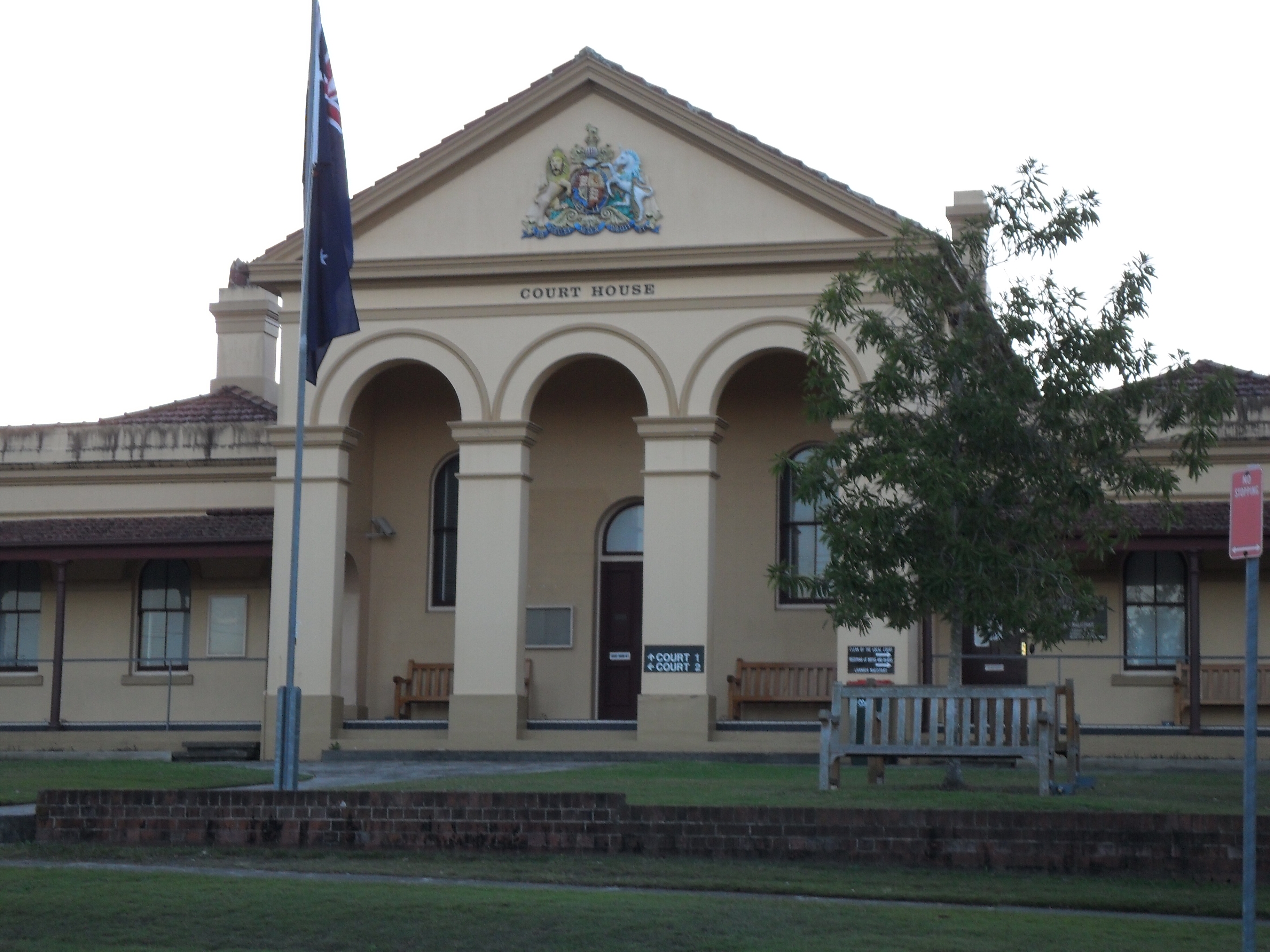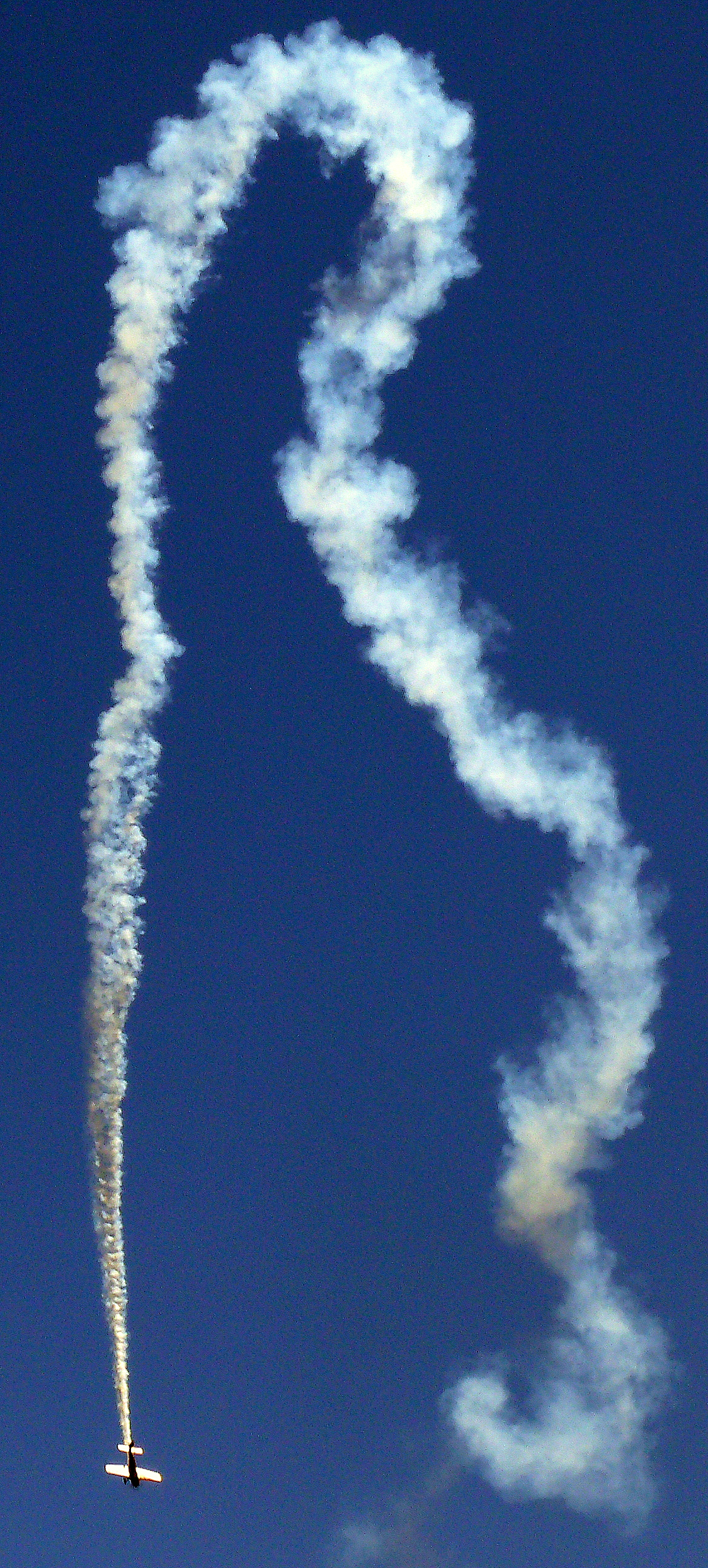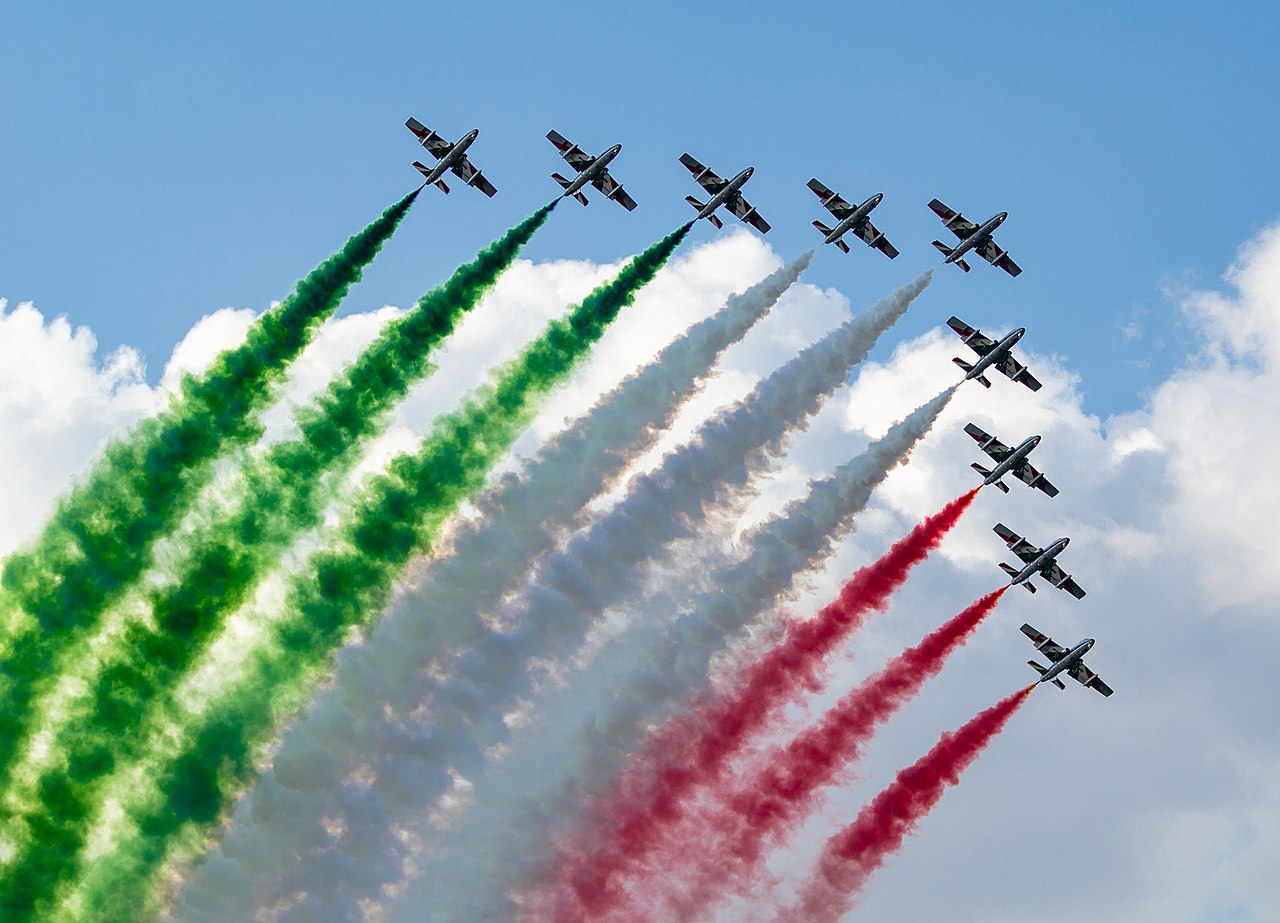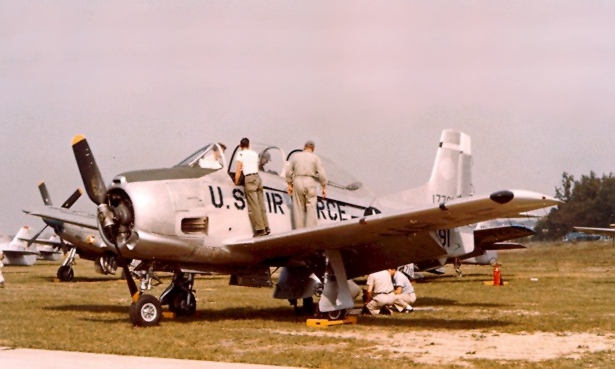|
Paul Bennet
Paul Bennet (born 16 November 1973 in Taree, Australia) is an Australian aerobatic pilot. He has placed first in the Australian Aerobatic Championships in both the Advanced and Unlimited category. Outside of competition aerobatics he is also a well known international airshow performer flying a wide range of aircraft. Biography Bennet grew up in Old Bar, near Taree NSW, Australia. He is the only son to Janet and Robert. He went to school at Old Bar Primary School and Taree High School. After completing school, Paul was offered an apprenticeship as a shipwright at Seafari Shipwrights in Forster, New South Wales. He worked as the manager of Genkem fiberglass supplies. Genkem later changed its name to Trojan Fibreglass and Composite Supplies, which he now manages. In 2005 he began Paul Bennet Airshows, a company offering air show management and air displays. Bennet's Aircraft Bennet's aeroplane, the Wolf Pitts Pro biplane, was originally built by Steve Wolf of Wolf Aircraft for ... [...More Info...] [...Related Items...] OR: [Wikipedia] [Google] [Baidu] |
Taree
Taree is a town on the Mid North Coast, New South Wales, Australia. Taree and nearby Cundletown were settled in 1831 by William Wynter. Since then Taree has grown to a population of 26,381, and is the centre of a significant agricultural district. It is 16 km from the Tasman Sea coast, and 317 km north of Sydney. Taree can be reached by train via the North Coast Railway, and by the Pacific Highway. Taree railway station is on the North Coast line of the NSW TrainLink network. It is serviced by six NSW TrainLink trains daily: three heading to Sydney, another three heading North to Grafton, Casino or Brisbane. Taree is within the local government area of Mid-Coast Council, the state electorate of Myall Lakes and the Federal electorate of Lyne. Name The name Taree is derived from "tareebit", a Biripi word meaning ''tree by the river'', or more specifically, the Sandpaper Fig ('' Ficus coronata''). History The Biripi were the indigenous people of what is now known as ... [...More Info...] [...Related Items...] OR: [Wikipedia] [Google] [Baidu] |
Stinson L-5 Sentinel
The Stinson L-5 Sentinel is a World War II-era liaison aircraft used by the United States Army Air Forces, U.S. Army Ground Forces, U.S. Marine Corps and the British Royal Air Force. It was produced by the Stinson Division of the Vultee Aircraft Company (Consolidated-Vultee from mid-1943). Along with the Stinson L-1 Vigilant, the L-5 was the only other American liaison aircraft that was exclusively built for military use and had no civilian counterpart. Design and development The origins of the L-5 can be traced to the prewar civilian Stinson HW-75. This 75 horsepower civilian high-wing design was built by the Stinson Aircraft Company at Wayne, Michigan and first flew in 1939. It was marketed as the Model 105 and was first introduced to the public at the New York World's Fair. The three-place HW-75 featured two side-by-side seats and a third "jumpseat" in back on which a small passenger could sit facing sideways. Stylish, economical, spin resistant and easy to fly, the plane ... [...More Info...] [...Related Items...] OR: [Wikipedia] [Google] [Baidu] |
Aerobatic Pilots
Aerobatics is the practice of flying maneuvers involving aircraft attitudes that are not used in conventional passenger-carrying flights. The term is a portmanteau of "aerial" and "acrobatics". Aerobatics are performed in aeroplanes and gliders for training, recreation, entertainment, and sport. Additionally, some helicopters, such as the MBB Bo 105, are capable of limited aerobatic manoeuvres. An example of a fully aerobatic helicopter, capable of performing loops and rolls, is the Westland Lynx. Most aerobatic manoeuvres involve rotation of the aircraft about its longitudinal (roll) axis or lateral (pitch) axis. Other maneuvers, such as a spin, displace the aircraft about its vertical (yaw) axis. Manoeuvres are often combined to form a complete aerobatic sequence for entertainment or competition. Aerobatic flying requires a broader set of piloting skills and exposes the aircraft to greater structural stress than for normal flight. In some countries, the pilot must wear a pa ... [...More Info...] [...Related Items...] OR: [Wikipedia] [Google] [Baidu] |
1973 Births
Events January * January 1 - The United Kingdom, the Republic of Ireland and Denmark 1973 enlargement of the European Communities, enter the European Economic Community, which later becomes the European Union. * January 15 – Vietnam War: Citing progress in peace negotiations, U.S. President Richard Nixon announces the suspension of offensive action in North Vietnam. * January 17 – Ferdinand Marcos becomes President for Life of the Philippines. * January 20 – Richard Nixon is Second inauguration of Richard Nixon, sworn in for a second term as President of the United States. Nixon is the only person to have been sworn in twice as President (First inauguration of Richard Nixon, 1969, Second inauguration of Richard Nixon, 1973) and Vice President of the United States (First inauguration of Dwight D. Eisenhower, 1953, Second inauguration of Dwight D. Eisenhower, 1957). * January 22 ** George Foreman defeats Joe Frazier to win the heavyweight world boxing championship. ** A ... [...More Info...] [...Related Items...] OR: [Wikipedia] [Google] [Baidu] |
Living People
Related categories * :Year of birth missing (living people) / :Year of birth unknown * :Date of birth missing (living people) / :Date of birth unknown * :Place of birth missing (living people) / :Place of birth unknown * :Year of death missing / :Year of death unknown * :Date of death missing / :Date of death unknown * :Place of death missing / :Place of death unknown * :Missing middle or first names See also * :Dead people * :Template:L, which generates this category or death years, and birth year and sort keys. : {{DEFAULTSORT:Living people 21st-century people People by status ... [...More Info...] [...Related Items...] OR: [Wikipedia] [Google] [Baidu] |
Lancair 320
The Lancair 320 is a two-seat single-engined light aircraft marketed in kit form by the U.S. general aviation manufacturer Lancair. It is based on the Lancair 235, but with a larger fuselage and more powerful engine, and like the 235, it is a low-winged monoplane of composite construction with a retractable tricycle undercarriage, with side-by-side seating in an enclosed cockpit. The Lancair 360 is similar, but with a more powerful engine. In 1990 the ACT Apache 1, based on the Lancair 320 was proposed to be jointly built by Aerotech S.A. of Switzerland and Aviation Composite Technology Inc. in the Philippines for use by the Armed Forces of the Philippines and the Philippine National Police. Specifications References ;Notes ;BibliographyLancairretrieved June 24, 2008retrieved June 24, 2008 External links * {{Lancair 320 __NOTOC__ Year 320 (Roman numerals, CCCXX) was a leap year starting on Friday (link will display the full calendar) of the Julian calendar. At the ... [...More Info...] [...Related Items...] OR: [Wikipedia] [Google] [Baidu] |
Pitts Model 12
The Pitts Model 12 (also known by its nicknames "Bolshoi", "Macho Stinker", "Pitts Monster") is a high performance aerobatic biplane designed around the Vedeneyev M14P/PF engine. The aircraft can be built from plans or as a kitplane, or can be bought ready-to-fly from the factory. Design and development The Pitts model 12 was designed by Curtis Pitts starting in 1993. Pitts presented his completed design on his 80th birthday in December 1995. The Pitts Model 12 is a biplane built using fabric covered welded steel tubing for the fuselage, and fabric covered wings with wood spars. The leading edge is made of formed plywood. The landing gear is solid aluminum Aluminium (aluminum in American and Canadian English) is a chemical element with the symbol Al and atomic number 13. Aluminium has a density lower than those of other common metals, at approximately one third that of steel. It ha .... Operational history , 59 examples had been completed and flown. V ... [...More Info...] [...Related Items...] OR: [Wikipedia] [Google] [Baidu] |
Cessna O-2 Skymaster
The Cessna O-2 Skymaster (nicknamed "Oscar Deuce") is a military version of the Cessna 337 Super Skymaster, used for forward air control (FAC) and psychological operations (PSYOPS) by the US military between 1967 and 2010. Design and development In 1966, the United States Air Force (USAF) commissioned Cessna to build a military variant of the Skymaster to replace the Cessna O-1 Bird Dog. Both the civilian and military Skymasters were low-cost twin-engine piston-powered aircraft, with one engine in the nose of the aircraft and a second in the rear of the fuselage. The push-pull configuration provided centerline thrust, allowing simpler operation than the low-wing mounting of most twin-engine light aircraft, and allowed a high wing to be used, providing clear observation below and behind the aircraft. Modifications made for the military configuration included fore-and-aft seating for a pilot and observer, instead of the six seats of the civilian version; installation of vi ... [...More Info...] [...Related Items...] OR: [Wikipedia] [Google] [Baidu] |
Yakovlev Yak-52
The Yakovlev Yak-52 (russian: Яковлев Як-52) is a Soviet primary trainer aircraft which first flew in 1976. It was produced in Romania from 1977 to 1998 by Aerostar, as ''Iak-52'', which gained manufacturing rights under agreement within the former COMECON socialist trade organisation. The Yak-52 was designed as an aerobatic trainer for students in the Soviet DOSAAF training organisation, which trained civilian sport pilots and military pilots. Currently the Yak-52 is used in the Fédération Aéronautique Internationale (FAI) World Aerobatic Yak 52 Competition, a popular powered aircraft one-design World Aerobatic Championship. Design and development A descendant of the single-seat competition aerobatic Yakovlev Yak-50, the all-metal Yak-52 is powered by a 268 kW (360 hp) Vedeneyev M14P nine-cylinder radial engine. Since the aircraft was designed to serve as a military trainer, the development of the aircraft incorporates a number of features to be foun ... [...More Info...] [...Related Items...] OR: [Wikipedia] [Google] [Baidu] |
CAC Wirraway
The CAC Wirraway (an Aboriginal word meaning "challenge") was a training and general purpose military aircraft manufactured in Australia by the Commonwealth Aircraft Corporation (CAC) between 1939 and 1946. It was an Australian development of the North American NA-16 training aircraft. The Wirraway has been credited as being the foundation of Australian aircraft manufacturing. During the Second World War, both the Royal Australian Air Force (RAAF) and Royal Australian Navy (RAN) deployed a number of Wirraways into combat roles, where they served in a makeshift light bomber/ground attack capacity, striking against the advancing forces of the Empire of Japan. While the type had been primarily used as a trainer and general purpose aircraft, being present in small quantities within the majority of front-line squadrons for these purposes, the aircraft was often pressed into combat when required. Typically, fighter versions of the Wirraway were operated over theatres such as New Guin ... [...More Info...] [...Related Items...] OR: [Wikipedia] [Google] [Baidu] |
Aerobatics
Aerobatics is the practice of flying maneuvers involving aircraft attitudes that are not used in conventional passenger-carrying flights. The term is a portmanteau of "aerial" and "acrobatics". Aerobatics are performed in aeroplanes and gliders for training, recreation, entertainment, and sport. Additionally, some helicopters, such as the MBB Bo 105, are capable of limited aerobatic manoeuvres. An example of a fully aerobatic helicopter, capable of performing loops and rolls, is the Westland Lynx. Most aerobatic manoeuvres involve rotation of the aircraft about its longitudinal (roll) axis or lateral (pitch) axis. Other maneuvers, such as a spin, displace the aircraft about its vertical (yaw) axis. Manoeuvres are often combined to form a complete aerobatic sequence for entertainment or competition. Aerobatic flying requires a broader set of piloting skills and exposes the aircraft to greater structural stress than for normal flight. In some countries, the pilot must wear a ... [...More Info...] [...Related Items...] OR: [Wikipedia] [Google] [Baidu] |
North American T-28 Trojan
The North American Aviation T-28 Trojan is a radial-engine military trainer aircraft manufactured by North American Aviation and used by the United States Air Force and United States Navy beginning in the 1950s. Besides its use as a trainer, the T-28 was successfully employed as a counter-insurgency aircraft, primarily during the Vietnam War. It has continued in civilian use as an aerobatics and warbird performer. Design and development On September 24, 1949, the XT-28 (company designation NA-159) was flown for the first time, designed to replace the T-6 Texan. The T-28A arrived at the Air Proving Ground, Eglin Air Force Base, Florida, in mid-June 1950, for suitability tests as an advanced trainer by the 3200th Fighter Test Squadron, with consideration given to its transition, instrument, and gunnery capabilities. Found satisfactory, a contract was issued and between 1950 and 1957, a total of 1,948 were built. Following the T-28's withdrawal from U.S. military service, a numb ... [...More Info...] [...Related Items...] OR: [Wikipedia] [Google] [Baidu] |







.jpg)

